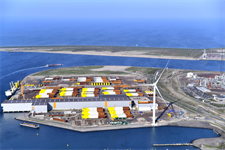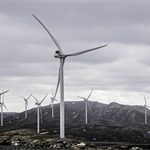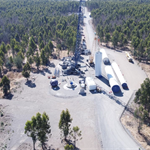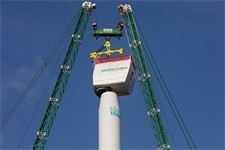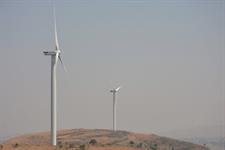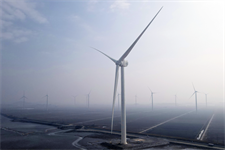How SGRE and GE’s escalating legal battle could backfire
Energy Disrupter
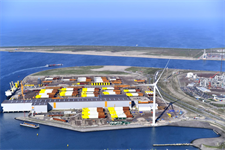
Rival manufacturers Siemens Gamesa Renewable Energy (SGRE) and GE have now both filed lawsuits against one another as they prepare to negotiate licensing agreements, intellectual property (IP) expert Philip Totaro told Windpower Monthly.
The impact of the escalating legal tussle could see rival OEMs gain market share in the nascent US offshore wind sector, create supply chain disruptions, and limit both litigants’ commercial activity.
GE is trying to block SGRE’s onshore turbines from the US market, claiming the European manufacturer is infringing its IP.
Meanwhile, Siemens Gamesa has filed a separate IP complaint against GE’s Haliade-X turbines.
Both companies deny the other’s allegations and have stated they will defend themselves legally.
Negotiating table
When it initially sued SGRE in August, GE was trying to bring its rival to the negotiating table for the low- and zero-voltage ride-through technology, Intelstor CEO Totaro explained.
GE has licensing agreements with all of its main competitors – except SGRE – and so is able to extract IP royalties on other firms’ turbine sales.
Meanwhile, SGRE’s reactionary lawsuit – claiming GE’s Haliade-X turbines infringe its patents for offshore direct-drive technology – indicates the Spanish-German manufacturer is trying to strengthen its position in potential licensing agreements, Totaro argues.
He added that this strategy is “typical” in IP litigation.
Rival manufacturers
Both lawsuits could also prove beneficial for third parties, Totaro explained.
GE’s lawsuit could drive onshore wind developers to Nordex and Vestas, while Siemens Gamesa’s could drive offshore wind developers towards MHI Vestas.
This is because developers unable to use Siemens Gamesa’s onshore wind turbines and GE’s offshore wind turbines may look at cheaper alternatives.
Vestas and Nordex’s turbines already have GE’s IP royalty factored into costs and tend to be cheaper than GE’s, while MHI Vestas could benefit if Siemens Gamesa’s ability to sell in the US offshore wind market is restricted.
Supply chain
The two litigants may also face supply chain disruptions as third parties win more orders first, Totaro warned.
Such disruptions would likely be limited to offshore, but could spill over into the onshore wind sector too. However, any disruption to the onshore wind supply chain would likely be limited given its depth, he added.
Delays to US offshore wind projects are possible – but only if there is a full ban on importing components, Totaro suggested. Such an outcome would be unlikely, however, as it is “typically reserved for the most egregious offences of deliberate IP infringement”.
Commercial impacts
Totaro believes the SGRE-GE legal battle could drag on for 12-15 months – slightly longer than a similar legal tussle between GE and Vestas that began in 2017.
Vestas and GE ultimately settled all disputes by agreeing a licence for both parties to use the former’s zero-voltage ride-through technology – the same technology that GE’s current case against Siemens Gamesa is focused on – and a confidential payment from the Danish company to the US tech giant.
Totaro explained that the commercial impacts – reduced orders and delayed revenue – are likely to significantly outweigh Siemens Gamesa and GE’s court costs and legal damages.
He added that a GE lawsuit against MHI in 2008 limited the Japanese industrial giant from selling its onshore wind turbines in the US. The loss of sales and service contracts forced MHI out of the onshore wind market, not just in the US, but globally.
“The intent of IP litigation should not be to drive a competitor from the market entirely, but to level the playing field for using a protected technology,” Totaro told Windpower Monthly.
“IP litigation that drives companies out of the market creates a lack of choice among supply chain companies. This is never a good thing for project developers or end consumers who end up paying a higher price when we as an industry are trying to drive towards lower LCOE (levelised cost of energy) in an effort to displace fossil fuels.”
He added: “Patent litigation is never really about the legal side of it, it’s about driving commercial markets.
“This seems like a disproportionate consequence for something as silly as a dispute over IP rights. The industry needs to do more on this matter.”

